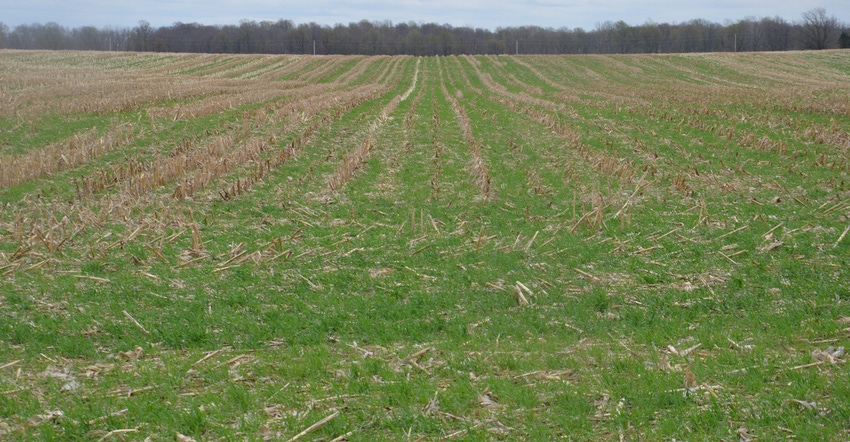June 8, 2021

Several months ago, we discussed the carbon-to-nitrogen ratio and implications for residue in your fields. However, just looking at the C-to-N ratio of a cover crop doesn’t account for all practical considerations associated with planting and growing the cover crop and next cash crop. Many factors are at play:
Timing. Making sure the cover crop can be planted in time to get the desired growth will help achieve your ratio and residue breakdown goals. Suppose you want to lower your C-to-N ratio to encourage residue breakdown, so you’re planning an oat-radish mix after corn. If you drill after harvest, you won’t get much growth before it winter-kills. You will receive little to no benefit. Instead, consider a different cover crop that can be planted later or find a different seeding method to plant earlier.
Disease and pest carryover to cash crop. If you’re planting a grass cover crop such as cereal rye, and your next crop is corn, make sure that if the cover crop has issues, they don’t continue into your corn. One option is planting a cover crop mix. By mixing species, you help break up pest and disease cycles while dialing in your C-to-N ratio.
Cover crop seed cost and experience level. Certain species are more expensive, and mixes can cost more. Know your budget and figure out what fits. If you’re newer to cover crops or aren’t ready to take the next step into mixes, don’t overwhelm yourself. Try them on a small area or wait until you feel more comfortable to really start managing the C-to-N ratio.
Typical cover crop-cash crop rotation. Let’s examine a typical cash crop and cover crop rotation found where corn is followed by cereal rye followed by soybeans. At first this may seem opposite of what we know about managing C-to-N ratios. Both corn and cereal rye have high C-to-N ratios. However, this system can work due to practical considerations we discussed. There may be a lot of leftover residue in the spring due to a high C-to-N ratio, which will tie up nitrogen. But because soybeans fix their own N, they can tolerate much more N tie-up without an effect on yield. If soybeans are followed by a lower C-to-N ratio cover crop, the new cover crop will start breaking down corn and cereal rye residue.
Late harvest of corn leaves fewer cover crop options, especially in northern Indiana. Cereal rye might be most practical for timing and weather conditions. Cereal rye is also easier to terminate than some other cover crops or mixes, a plus for newcomers.
Dialing in C-to-N ratio. As you become more comfortable and your soil biology becomes more active, you can dial in your C-to-N ratio and start building mixes and closely managing residue. Look at fields after planting. If you see more than two years of residue, there is either a very high C-to-N ratio, low soil biological activity, or both.
If you’ve been in a no-till and cover crop system for a while, you might have the opposite problem: little residue left and/or a low C-to-N ratio. It takes time to fix a system that is out of balance. Don’t expect results overnight. Rely on time and careful planning.
Kautz is a district conservationist with the Natural Resources Conservation Partnership. She writes for the Indiana Conservation Partnership.
You May Also Like




